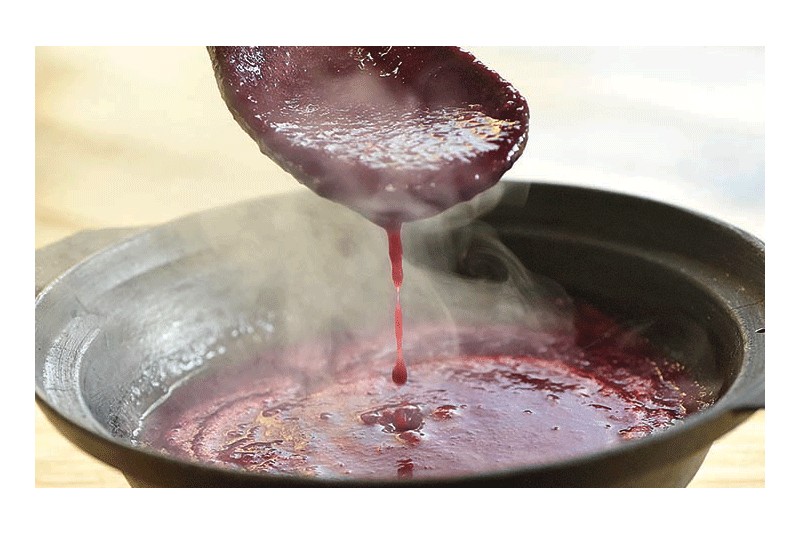
A good sauce is a core component of culinary culture. Knowing how to make a handful of them can elevate your kitchen game to unforeseen heights. Often, a good sauce is the star of the show. After all, what would Thanksgiving turkey be without gravy? Or Eggs Benedict without hollandaise?
Now, we don’t expect you to pull a Bearnaise sauce out of your hat at a moment’s notice. But you should be able to whip up a solid tomato-based sauce for pasta, or a good teriyaki sauce for rice and veggies or skewered proteins. We know, there are great pre-made options out there, from complex fish sauce to throw-it-on-anything Japanese barbecue sauce. Yet, you know as well as we do that when you pull it off from scratch, it’s more rewarding and can even taste better.
If you’re game for making some sauces, it pays to have the right gadgetry. A good saucepan will get you to your delicious destination. You’ll also want some good mixing devices and a decently stocked spice cabinet. Aside from that, it’s mostly just about settling into a quality recipe and assembling the liquid gold.
Here are some of the best sauce recipes to have on hand when you get cooking.
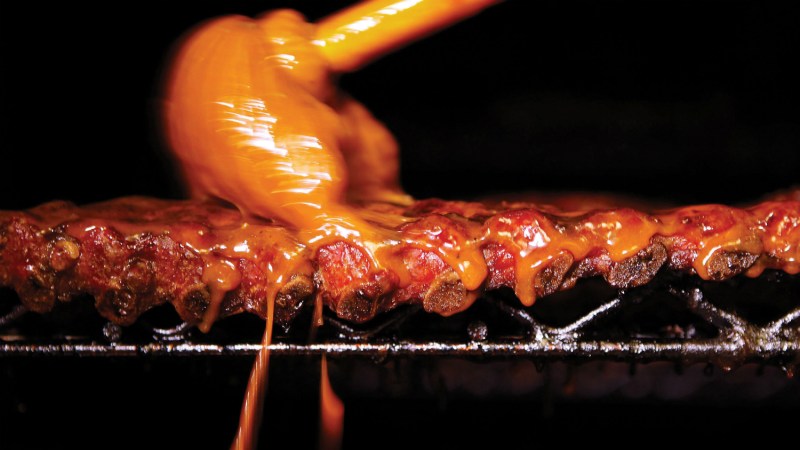
Simple barbecue sauce recipe
Sometimes simple is just what the doctor — or chef — ordered. This reliable New York Times recipe can be slathered on just about anything. It has a little kick, along with some nice sweetness and a subtle bit of tang. It goes great on ribs or any barbequed meat.
Ingredients:
- 2/3 cup ketchup
- 1/2 cup cider vinegar
- 1/4 cup brown sugar
- 2 teaspoons pimentón (smoked Spanish paprika)
- 1 teaspoon ground cumin
- 1 teaspoon kosher salt
- 1 teaspoon freshly cracked black pepper
Method:
- Combine all ingredients in a small saucepan, bring to a simmer over medium heat, and cook for five minutes.
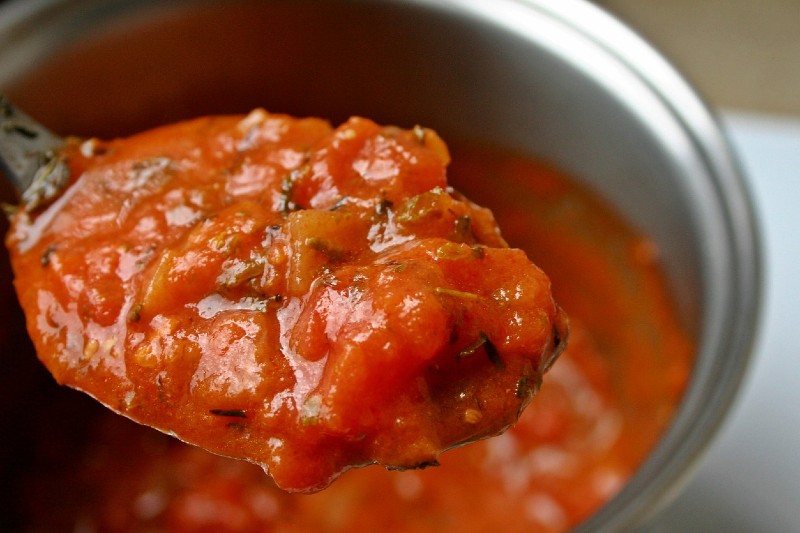
Basic tomato sauce recipe
Jamie Oliver has his sauces down, and this basic tomato sauce is among the best and most utilitarian. As the chef says, you can batch it up and keep it in the fridge for a week or even freeze it for several months.
Ingredients:
- 3 15-ounce cans Italian plum tomatoes
- 1 tablespoon red wine vinegar
- 1 handful of fresh basil or marjoram
- 1 large garlic clove
- 1 small dried red chili
- 2 teaspoons dried oregano
- Extra virgin olive oil
Method:
- Peel and finely chop the garlic, then gently fry in a thick-bottomed pan with 2 tablespoons of olive oil. Crumble in the chili, add the oregano and tomatoes.
- Mix gently, but do not break up the tomatoes as this will release the pips, which will make the sauce slightly bitter — by leaving the tomatoes whole and letting the mixture cook slowly you’ll get a nice sweet sauce. (You can remove the pips from the tomatoes if you want, but I don’t bother.) Bring to the boil and simmer gently for 1 hour.
- Add the vinegar to the pan, then stir and chop up the tomatoes in the sauce.
- Pick the basil or marjoram and roughly chop, then add to the pan.
- Season well to taste with sea salt and black pepper, and finish with 2-3 tablespoons of extra virgin olive oil.
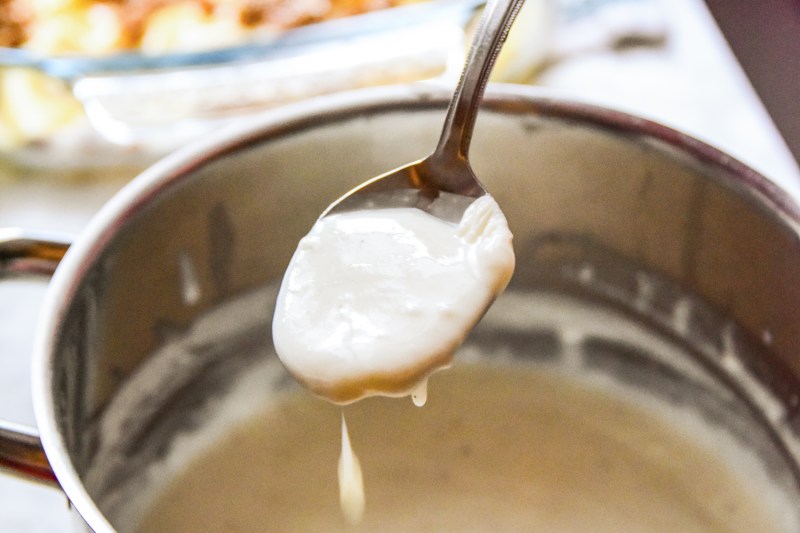
Bechamel recipe
To many cooks and Francophiles especially, bechamel is the queen of sauces. We like this Seattle Times recipe on its own with some pasta or worked into a lasagna with some mushrooms or meat.
Ingredients:
- 7 tablespoons unsalted butter
- 6 tablespoons all-purpose flour
- 3 1/2 cups milk, heated just until steaming
- 1/2 teaspoon coarse salt
- 1 pinch of nutmeg
- Ground pepper to taste
Method:
- Melt butter in a heavy medium saucepan over medium-low heat. Add flour, whisking constantly. Cook for 2 to 3 minutes; do not let the roux brown.
- Whisking constantly, add 2 tablespoons of hot milk to the saucepan. Milk should be steaming, not boiling. I like making a double boiler with a large pot and a heat-safe bowl (aluminum or glass) to heat up my milk. It will stay warm while you add it to the béchamel but not scald or burn the milk.
- Pour half of the remaining hot milk into the saucepan in small increments, whisking the mixture constantly, until smooth paste forms.
- Whisk the remaining milk into the pan; add nutmeg and salt. Cook, whisking occasionally. Be sure to scrape the bottom and sides, until the sauce is thick and creamy, about 15 minutes.
- If lumps form, whisk rapidly. Season with pepper and remove from heat. Let rest until lukewarm, about 30 minutes.
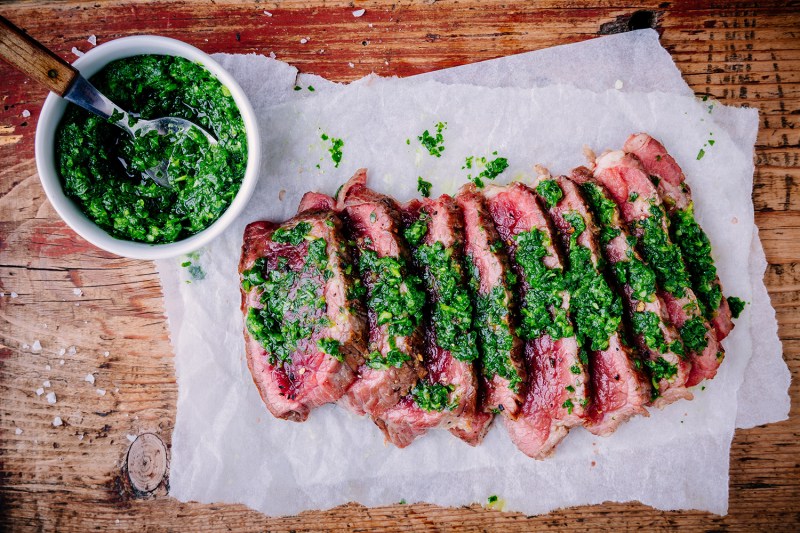
Chimichurri recipe
South Americans are especially fond of chimichurri, the coarse green sauce that’s pure magic atop the right protein or starch. We love this take from El Che Steakhouse in Chicago. The best versions of the sauce are so flavorful you can simply spread some on a slab of rustic bread.
Ingredients:
- 3 cups flat-leaf parsley leaves (from about 3 bunches), very finely chopped (no stems)
- 6 garlic cloves, very finely chopped
- 1 1/2 teaspoons finely chopped fresh oregano leaves
- 1/4 cup distilled white vinegar
- 1 teaspoon kosher salt
- 1 teaspoon freshly ground black pepper
- 3/4 teaspoon dried red pepper flakes
- 1 bay leaf
- 3/4 cup extra-virgin olive oil
Method:
- In a medium-sized airtight food container, stir together the parsley, garlic, oregano, vinegar, salt, black pepper, bay leaf, and red pepper flakes. Stir in the olive oil, cover, and refrigerate the chimichurri sauce overnight.
- If pressed for time, throw everything in a food processor and pulse it a few times instead of hand chopping.

Aioli sauce recipe
Aioli is an incredibly versatile sauce, it goes well with a wide number of foods from burgers and fries to a classic seafood meal. It has a complex flavor, but it is a fairly simple sauce to make. A good aioli is a sauce every home chef should have in their cookbook. This aioli recipe from Food Network is a good, basic aioli.
Ingredients:
- 3 cloves of garlic
- Kosher salt
- 1 tablespoon lemon juice
- 2 large egg yolks
- 1/2 cup oil (use a neutral oil like vegetable oil)
- 1/2 cup extra-virgin olive oil
- 1 tablespoon water
- Cayenne pepper
Method:
- Smash the garlic with the side of a knife and sprinkle with 1/2 teaspoon of salt. Chop the garlic finely until it becomes a smooth paste.
- Dampen a kitchen towel and roll it up and then anchor a bowl in the center.
- Whisk the garlic paste, lemon juice, and egg yolks in the bowl.
- Whisk the oil into the mixture, adding it drop by drop, while whisking constantly.
- Once the mixture has thickened, add the oil a little faster. Add water if it gets too thick.
- Mix in the cayenne and serve.
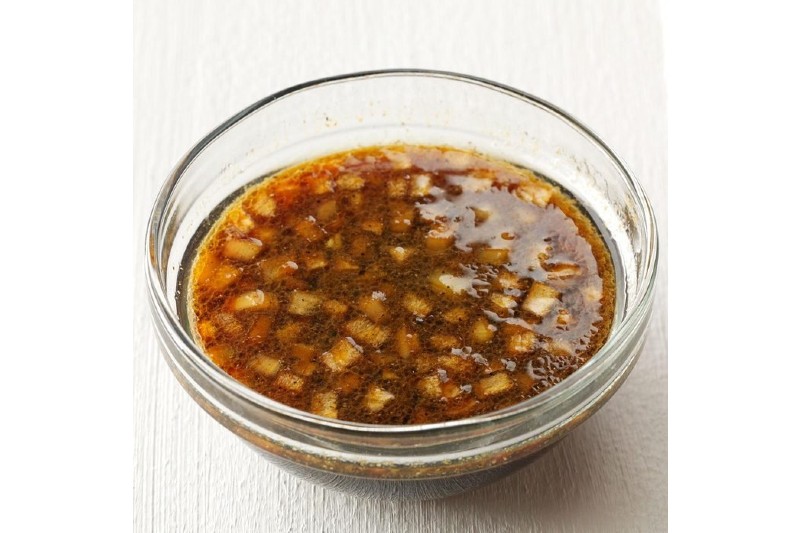
Teriyaki recipe
A good teriyaki sauce can accompany everything from tofu and baked fish to any number of rice dishes. This recipe from food.com is particularly solid. Note that it yields about 1.5 cups of sauce.
Ingredients:
- 1 cup water
- 1/4 cup soy sauce
- 1/4 cup cold water
- 5 tablespoons packed brown sugar
- 2 tablespoons cornstarch
- 1-2 tablespoons honey
- 1/2 teaspoon ground ginger
- 1/4 teaspoon garlic powder
Method:
- Mix all but cornstarch and 1/4 cup water in a saucepan and begin heating.
- Mix cornstarch and cold water in a cup and dissolve.
- After the sauce is simmering, add cornstarch and water mixture, whisking well until the sauce thickens.
- Heat until the sauce thickens to the desired thickness.

Tips and tricks for making sauces
- Use fresh ingredients. Sauces are only as good as the ingredients. Fresh is best.
- Toast or heat your spices to intensify their flavors. This technique will add a depth of flavor.
- Use stock instead of water for added flavor.
- Finish with a pat of butter for a thicker, richer sauce.
- If your sauce tastes a little flat or dull, add a squeeze of lemon or some sort of acid to brighten it up.
Editors' Recommendations
- How to master the perfect ribeye steak: Tips, tricks (and a delicious recipe)
- These are the healthiest vegetables you need to start eating now
- How to make chai tea: Tasty recipes for a homemade delight
- How to cook rice perfectly every time, no matter how you choose to make it
- How to grill corn on the cob: The tips, tricks, and recipes you need



